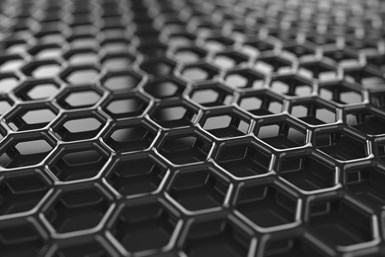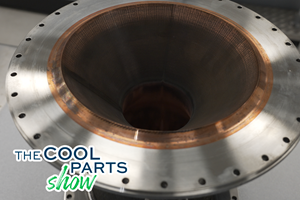IMPACT Project Call Worth $11.7M in Funding for Casting, Forging
The project call is for demonstrating productivity and yield benefits for casting and forging manufacturing via additive manufacturing technologies, execute techno-economic analysis for metal powder AM, and to bridge component sourcing gaps with AM parts for casting and forging applications.
The National Center for Defense Manufacturing and Machining (NCDMM) and America Makes have announced a new directed project call funded by the Office of the Under Secretary of Defense, Research and Engineering Manufacturing Technology Office (OUSD (R&E)) and the Air Force Research Laboratory (AFRL) worth a total of $11.7 million.
The objective of the “Improvements in Manufacturing Productivity via Additive Capabilities and Techno-Economic Analysis (IMPACT)” project call is to demonstrate productivity and yield benefits for casting and forging manufacturing via additive manufacturing (AM) technologies, execute techno-economic analysis for metal powder AM, and to bridge component sourcing gaps with AM parts for casting and forging applications. The project call is also seeking innovative solutions for robotic AM process planning for continuous fiber-reinforced composite structures.
AM is of significant interest to the U.S. manufacturing base as the technology enables shorter lead times, mass customization, energy reduction, complex shapes and production of parts on demand providing benefits to both new acquisitions and legacy systems. “This project call addresses the needs of a broad cross section of our nation’s supply chain, including the casting and forging supply chain,” says Brandon Ribic, Ph.D., America Makes technology director. “We are thrilled for the opportunity to deliver longer term strategic investments to scaling AM technologies.”
America Makes strives to accelerate the development and deployment of innovative, cost-effective, energy-efficient AM and 3D printed technologies to meet defense and/or commercial needs. The proposed projects should be applicable to Technology Readiness Level (TRL) 4-7 and Manufacturing Readiness Level (MRL) 4-7 at the onset of the proposed project.
The request for proposal (RFP) includes 10 topic areas of focus. The number of anticipated awards and maximum funding will vary depending on the topic area being addressed.
Demonstrating Lead Time, Productivity and Yield Improvements for Casting and Forging Manufacturing Operations Using AM Technologies
- Topic Area 1 - Develop/disseminate leading practices and accelerate the adoption of 3D-printed molds/cores for sand castings.
- Topic Area 2 - Mature AM ceramic technology and promote adoption for rapid, low- volume production of investment castings for defense applications.
- Topic Area 3 - Develop and disseminate tools/frameworks to improve die (die casting) life with AM printed cooling channels.
- Topic Area 4 - Mature and promote methods to add high wear layers and complex geometric features to forgings.
- Topic Area 5 - Pilot the industrialization of AM preforms to expedite the forging process for low-volume forged components.
- Topic Area 6 - Develop and disseminate leading DED and cold spray practices to promote the adoption of die repair for forging applications.
- Topic Area 7 - AM for casting and forging innovations relevant to DoD acquisition or sustainment programs.
Disseminating the Value Proposition of Bridging Component Sourcing Gaps with AM Parts for Critical Casting and Forging Production
- Topic Area 8 - Techno-economic analysis and manufacturing readiness assessments to address bridging component sourcing gaps with AM parts for critical casting and forging production.
Identifying and Disseminating the Impact of Strategic R&D to Scale Powder Bed AM Technology
- Topic Area 9 - Powder AM techno-economic analysis.
Advancing AM Processing for Continuous Fiber Reinforced Composites
- Topic Area 10 - Innovations in robotic AM process planning.
To be eligible, the deadline for lead proposer to complete fully executed membership agreement with America Makes for Topics 1-8 is due by Wednesday, June 14; and for Topics 9-10 by Friday, June 23. Submission deadlines are Wednesday, June 28 by 5 p.m. ET for Topics 1-8; and Friday, July 7 by 5 p.m. ET for Topics 9-10. For full details and guidelines, visit Project Call For Applied Research Projects – May 2023.
Related Content
Video: For 3D Printed Aircraft Structure, Machining Aids Fatigue Strength
Machining is a valuable complement to directed energy deposition, says Big Metal Additive. Topology-optimized aircraft parts illustrate the improvement in part performance from machining as the part is being built.
Read More3D Printed NASA Thrust Chamber Assembly Combines Two Metal Processes: The Cool Parts Show #71
Laser powder bed fusion and directed energy deposition combine for an integrated multimetal rocket propulsion system that will save cost and time for NASA. The Cool Parts Show visits NASA’s Marshall Space Flight Center.
Read More8 Cool Parts From Formnext 2024: The Cool Parts Show #78
End-use parts found at Formnext this year address various aspects of additive's advance, notably AM winning on cost against established processes.
Read More3D Printed Titanium Replaces Aluminum for Unmanned Aircraft Wing Splice: The Cool Parts Show #72
Rapid Plasma Deposition produces the near-net-shape preform for a newly designed wing splice for remotely piloted aircraft from General Atomics. The Cool Parts Show visits Norsk Titanium, where this part is made.
Read MoreRead Next
Postprocessing Steps and Costs for Metal 3D Printing
When your metal part is done 3D printing, you just pull it out of the machine and start using it, right? Not exactly.
Read MoreCrushable Lattices: The Lightweight Structures That Will Protect an Interplanetary Payload
NASA uses laser powder bed fusion plus chemical etching to create the lattice forms engineered to keep Mars rocks safe during a crash landing on Earth.
Read MoreAlquist 3D Looks Toward a Carbon-Sequestering Future with 3D Printed Infrastructure
The Colorado startup aims to reduce the carbon footprint of new buildings, homes and city infrastructure with robotic 3D printing and a specialized geopolymer material.
Read More





















